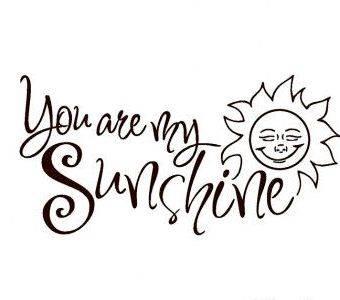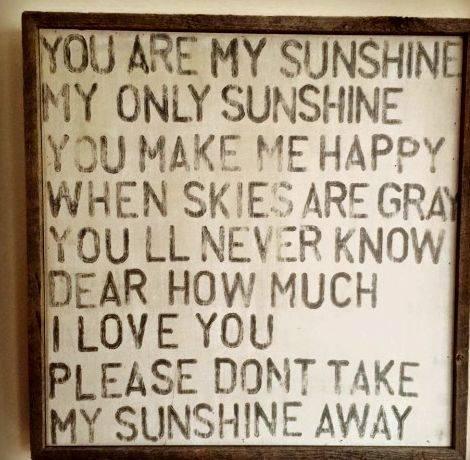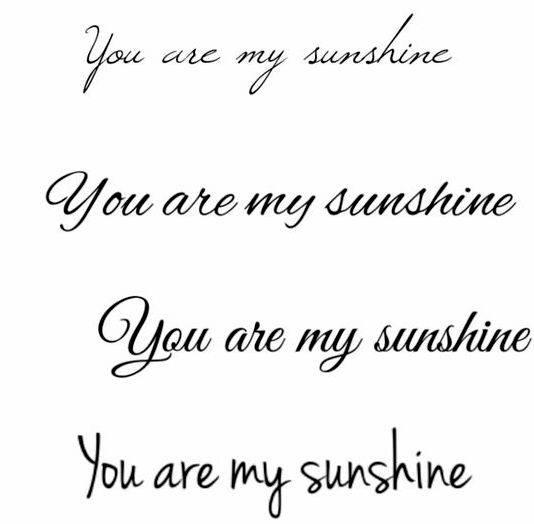

At 2:15 p.m. on Monday, when tornado sirens rang out in Moore, Okla. teachers at the AgapeLand Learning Center rushed their 15 students into the bathrooms — the safest place in their brick building. To protect their charges, the adults draped them in a protective covering; to keep them from panicking, they sang songs through the storm. As reported by the New York Times, they led the children in a round of “You Are My Sunshine,” which might seem gently ironic — or perhaps even subtly defiant — given the dangerous weather all around them. “You are my sunshine, my only sunshine,” they sang. “You make me happy when skies are gray.”
That story has become one of the main talking points in the news coverage of the Oklahoma tornadoes. It shows a bit of everyday heroism in the face of great destruction, reminiscent of similar lifesaving actions at Sandy Hook six months ago. Still, what makes the story so powerful is not simply the teachers’ common-sense decision to move the students into the bathrooms. Instead, it’s the image of everybody singing “You Are My Sunshine” in the eye of the storm. It’s hard to imagine the fear and uncertainty they faced, or even how the youngest of their charges would have responded, but certainly the situation lent new gravity to that final line of the chorus: “Please don’t take my sunshine away.”
Everybody knows the song. You know it. I know it. The kids in Oklahoma know it. So does everyone who reads about the Oklahoma tornadoes. “You Are My Sunshine” is so deeply embedded in the popular culture that most people can’t even remember when they first heard it. They’ve simply lived with it from the time they developed a memory.

I can fondly recall my Grandmother Love singing it to me when I was 3 or 4 and I would fall asleep in her giant four-poster bed. I sang along with her, so it can’t have been my first exposure to the tune. Or perhaps I simply picked up the words and the melody as she sang them to me. It’s a remarkably simple tune, especially when you excise the verses and focus exclusively on the chorus — as almost everybody does.

“You Are My Sunshine” may in fact be the most ubiquitous piece of music of the 20th century, second only to “Happy Birthday” and “Shave and a Haircut.” Its popularity never wanes with passing generations. Instead, it continually reappears in various contexts: as a campfire singalong, as a sweet lullaby from a parent to a child, in commercials for French’s mustard or children’s Tylenol. Seventy-five years after its debut, children’s performers still record the song. It’s the centerpiece of Elizabeth Mitchell’s 2002 album “You Are My Sunshine,” and former 98° singer Nick Lachey included a solemn cover on his new children’s album “A Father’s Lullaby.” It’s been punkified (Stine J), polkafied (Frank Yankovic), disco’ed (Domino Dancing), diva’ed (Aretha Franklin), and even slow-jammed (Mtume). Ike Tina Turner recorded a particularly badass version; Brian Wilson peppered the Beach Boys’ long-lost “SMiLE!” with a few bars; and later in his life, Johnny Cash gave it a distinctively melancholy interpretation.

And then there’s Ray Charles, who had a hit with “You Are My Sunshine” back in 1962. Appearing on his groundbreaking album “Modern Sounds in Country Western Music,” his may be the most exciting adult version of the song, with a recklessly syncopated chorus, the Raelettes on backing vocals, and flashy brass punctuating Charles’ every plea. More recently, there was a version included on the massively popular soundtrack to the Coen brothers’ 2000 film “O Brother Where Art Thou?” which has proved foundational for a new generation of folk revivalists from Mumford Sons to the Lone Bellow. And yet, the most significant recording of the song belongs to a man most people have never heard of, but who happens to be one of the most intriguing figures in country music and American political history.
The song’s provenance is muddied. There were two or three versions recorded in 1939, including one by the Rice Brothers Gang. Many historians believe Paul Rice actually penned the tune, but sold the rights to Jimmie Davis, a Louisiana college-professor-turned-criminal-court-clerk who moonlighted as a hillbilly singer at his local radio station. Other historians give writing credit to Davis and his steel guitar player, Charles Mitchell. Either way, Davis’ version, released in 1940 by the fledgling Decca Records, was an enormous hit. By today’s standards, it hardly sounds “country.” Instead, it’s a sophisticated amalgam of hillbilly swing and Dixieland jazz. The clarinet, piano and trumpet sound like they’re about to burst right out of the song, and Mitchell’s stately steel guitar solo can’t escape the instrument’s Hawaiian associations or its relative newness in country music.
It was not Davis’ first hit. In fact, he had been fairly prolific throughout the 1930s, recording numerous sides for Victor before migrating over to Decca. Among them were, according to Nick Tosches’ indispensable “Country: The Twisted Roots of Rock ‘n’ Roll,” “frail and wispy” sentimental tunes as well as songs “that dealt with sex plainly or in crypto-lubricities, but never without an extremely raunchy sense of humor.” The lasciviousness of Davis’ material did not distinguish him from his hillbilly contemporaries; in fact, double entendres were the coin of the pre-war country realm. He toned down his act upon signing with Decca, and Tosches calls him, somewhat derisively, a “crooner.”
In 1941, “You Are My Sunshine” was covered by Gene Autry, Lawrence Welk and Bing Crosby, yet Davis’ version dominated the public imagination. When he ran for governor of Louisiana in 1944, he used that hit as his campaign theme, singing it during stump speeches and at fundraisers, often while riding a horse he had named “Sunshine.” In advertisements and editorials across the state, his opponents tried to draw attention to his older, lewder songs, but none were as catchy or as identifiable as “You Are My Sunshine.” Davis won the governorship and served a single term in the 1940s. When he ran again 20 years later (now on a strictly segregationist platform), the song continued to play a role in his campaign.
Despite his career in politics and a handful of film appearances, “You Are My Sunshine” endures as Davis’ lasting legacy, much more so than any particular piece of legislation or celluloid. Out of office, according to Tosches, Davis recorded a new, explicitly religious version called “Christ Is My Sunshine,” which in retrospect seems a little redundant. The original song had rooted itself deep in the Louisiana soil, publicly intuited as implicitly religious. Nearly three decades after Davis left office, it was named the second official song of Louisiana (the first being “Give Me Louisiana,” by Doralice Fontane and John Croom).
“You Are My Sunshine” proved pivotal not just for Davis’ music or political career, but for hillbilly music in general. Arriving at a time when the U.S. was only just emerging from the Great Depression but had not yet become embroiled in World War II, the song would prove instrumental in popularizing the rural genre beyond the barn dances and hayrides of the South and Midwest. As Bill C. Malone and Jocelyn R. Neal write in “Country Music, U.S.A.”: “Some songs became so widely popular, and were performed in such an extensive variety of stylistic formats, that they virtually lost their country identities … [‘You Are My Sunshine’] became one of the most commercially programmed numbers in American popular music. Sung to death at innumerable parties, hayrides, fraternity bashes, and assorted social functions, it became one of the few country songs that every body knows. ‘You Are My Sunshine’ represented both the national flowering of country music and its eventual absorption into the mainstream of American popular culture.”
The song is the ultimate crossover hit — so broadly popular that many people may not be aware of its hillbilly origins. But what makes it endure? Why has “You Are My Sunshine” survived when other songs of the era have fallen by the wayside, largely forgotten except for a few country historians and enthusiasts? Perhaps the song’s most obvious quality is its simplicity. It’s not a hard song to sing, especially if you omit the verses. All the notes are clustered in the mid-range, so it doesn’t take a Dolly Parton to hit the high notes or a Johnny Cash to hit the low ones. Even those people who couldn’t carry a tune in a bucket can sing “You Are My Sunshine.” And given how the melody ascends and descends so fluidly, it’s actually fun to sing. The beat falls predictably and faithfully, so it’s almost impossible not to nod your head or tap your toe. It’s compact and easy: one of the most insistent earworms of the last century.
Despite its sunshiny lyrics, however, there is a melancholy, maudlin element to “You Are My Sunshine,” a vague pathos that underscores the central metaphor. That last line of the chorus implies some danger that the singer’s sunshine will be taken away — it will disappear behind a gray cloud or set on the horizon. The verses — so often deleted from performances, especially those intended for underage audiences —reinforce that desperation. The first verse opens with the narrator dreaming of his true love, then waking to find her gone: “I hung my head and cried.” She had told him she would love him always, but “now you’ve left me and love another / You have shattered all my dreams.”
Some listeners have detected a vague menace in the second verse. In “Heartaches By the Number: Country Music’s 500 Greatest Singles,” David Cantwell and Bill Friskics-Warren describe the situation and ponder the implications: “After pleading with his sweetheart not to forsake him for another, Davis slips in what sounds like a threat: ‘If you leave me to love another / You’ll regret it all someday.’ He could just be trying to get his woman to think twice about breaking up with him, but when, on the third verse, he reminds her of how she promised to be true, it’s as if he’s holding that pledge over her head. With those sauntering rhythms steeling his resolve, it’s as if Davis is determined to make her love him, even against her will.”
In other words, “You Are My Sunshine” is actually two very different songs: In its entirety, it recounts a troubled love affair beleaguered by recrimination and mistrust, but reduced to just its chorus, it is a sweet/bittersweet declaration of pure and simple love, with a simple yet powerful metaphor at its core. For that reason, “You Are My Sunshine” — in addition to being a lament, a lullaby, and a sing-along — has also become something of a secular hymn. The love it professes isn’t necessarily earthly or romantic; it could be spiritual or heavenly. So it’s no surprise that the song has been ascribed life-giving powers in recent years. As one story has it, a baby girl in ICU was serenaded back to full health by her 5-year-old brother’s bedside performance of the song. The infant was not expected to live, but was allowed to leave the hospital the next day.
Urban legend watchdogs are divided about the story’s grounding in fact. Snopes.com categorizes the rumor as “undetermined,” but does list a town and a hospital where the story originates. On the other hand, Truthorfiction.com proclaims it as “truth.” Most likely, it is a story of hope and recovery that was transformed through telling and retelling, but it’s no accident that “You Are My Sunshine” remains at its center. The song’s pleading structure renders it a form of prayer: “Please don’t take my sunshine away from me.”
This spiritualized understanding of the song has been renewed in the wake of the Oklahoma tornadoes. Already the account of its performance at AgapeLand Learning Center has gone viral, with a happy ending that seems to reinforce the song’s sentiments: The building itself was destroyed, but not one of those singing children was hurt.
Previous answers to this question
This is a preview of an assignment submitted on our website by a student. If you need help with this question or any assignment help, click on the order button below and get started. We guarantee authentic, quality, 100% plagiarism free work or your money back.
 Get The Answer
Get The Answer